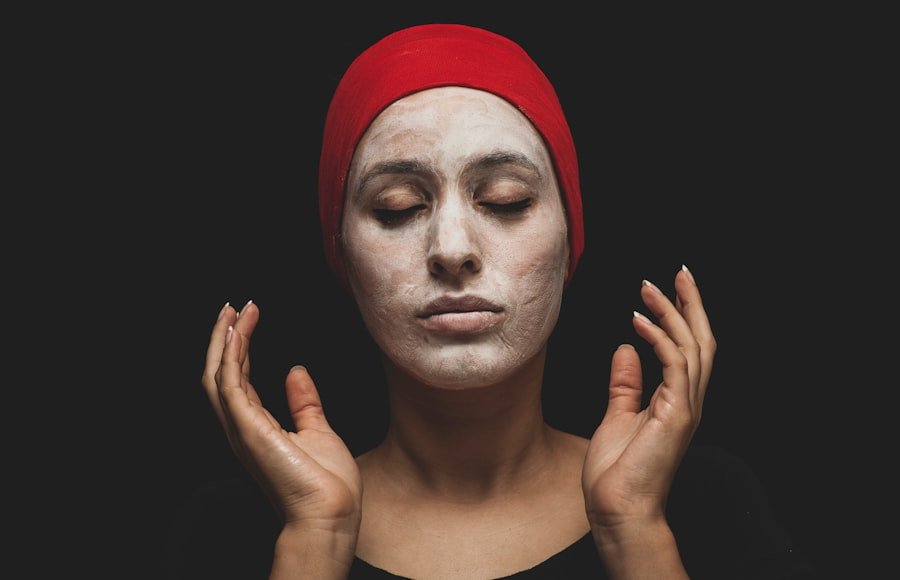Facial oils and creams are two distinct categories of skincare products, each with unique properties and functions. Facial oils are typically composed of a blend of plant-based oils, essential oils, and sometimes synthetic oils. They are designed to penetrate the skin deeply, providing hydration and nourishment at a cellular level.
The lightweight nature of oils allows them to absorb quickly, delivering essential fatty acids and antioxidants that can help improve skin texture and tone. Oils can also create a protective barrier on the skin, locking in moisture and preventing transepidermal water loss. On the other hand, creams are emulsion-based products that combine water and oil to create a thicker consistency.
They often contain a variety of active ingredients, including humectants, emollients, and occlusives, which work together to hydrate, soften, and protect the skin. Creams are generally more suitable for those who require a heavier texture to combat dryness or provide a more substantial layer of moisture. The formulation of creams allows for a slower absorption rate, which can be beneficial for prolonged hydration throughout the day or night.
Key Takeaways
- Facial oils are more lightweight and absorb quickly into the skin, while creams are thicker and provide more hydration and barrier protection.
- Choose facial oils for dry or aging skin, and creams for oily or acne-prone skin.
- Facial oils provide intense hydration and nourishment for dry and mature skin, while creams offer a protective barrier and lock in moisture for all skin types.
- Creams are beneficial for oily and acne-prone skin as they provide hydration without clogging pores, while facial oils can balance oil production and prevent dehydration.
- For oily skin, lightweight facial oils can help regulate sebum production, while for dry skin, creams provide long-lasting hydration and prevent moisture loss.
Choosing the Right Product for Your Skin Type
Selecting the appropriate product for your skin type is crucial for achieving optimal results in your skincare routine. For individuals with oily or acne-prone skin, lightweight facial oils that are non-comedogenic can be beneficial. Oils such as jojoba or tea tree oil can help balance sebum production while providing hydration without clogging pores.
Conversely, those with dry or mature skin may find that richer creams containing ingredients like shea butter or hyaluronic acid provide the necessary moisture and nourishment to maintain skin elasticity and suppleness. Combination skin types often require a more tailored approach. A lightweight oil can be applied to drier areas while a cream can be used on oilier zones to ensure balanced hydration.
It’s essential to consider not only your skin type but also any specific concerns you may have, such as sensitivity or signs of aging. Understanding your unique needs will guide you in selecting products that enhance your skin’s health rather than exacerbate existing issues.
The Benefits of Facial Oils for Different Skin Types

Facial oils offer a myriad of benefits across various skin types. For oily skin, certain oils can help regulate sebum production. For instance, jojoba oil closely resembles the skin’s natural sebum, making it an excellent choice for those with oily or acne-prone skin.
It can help balance oil levels while providing hydration without the heaviness associated with traditional creams. Additionally, oils rich in linoleic acid, such as grapeseed oil, can reduce inflammation and prevent breakouts. For dry or mature skin types, facial oils can be transformative.
Oils like argan or rosehip are packed with essential fatty acids and vitamins that nourish and rejuvenate the skin.
Furthermore, facial oils can enhance the effectiveness of other skincare products by allowing them to penetrate deeper into the skin layers when applied after cleansing.
The Benefits of Creams for Different Skin Types
Creams serve as a versatile option for various skin types due to their emollient properties and ability to provide long-lasting hydration. For dry skin, creams containing occlusive agents like petrolatum or dimethicone can create a barrier that locks in moisture and prevents water loss. This is particularly beneficial during colder months when environmental factors can exacerbate dryness.
Creams often contain humectants such as glycerin or urea that draw moisture from the environment into the skin, further enhancing hydration levels. For sensitive skin types, creams formulated with soothing ingredients like aloe vera or chamomile can provide relief from irritation while delivering essential moisture. These formulations often avoid harsh chemicals or fragrances that could trigger reactions.
Additionally, creams can be beneficial for those with combination skin, as they offer a balanced approach to hydration without overwhelming oilier areas. By selecting the right cream based on individual needs, users can achieve a well-hydrated complexion without compromising their skin’s health.
How Facial Oils and Creams Work on Oily Skin
When it comes to oily skin, both facial oils and creams can play significant roles in maintaining balance and hydration. Facial oils designed for oily skin typically feature lightweight formulations that do not clog pores. For example, squalane oil is known for its non-greasy texture and ability to mimic the skin’s natural oils, making it an excellent choice for those prone to breakouts.
By incorporating such oils into their routine, individuals with oily skin can achieve hydration without exacerbating their condition. Creams formulated for oily skin often contain mattifying agents that help control shine while providing necessary moisture. Ingredients like salicylic acid or niacinamide can be included to address acne concerns while keeping the skin hydrated.
The key is to choose products labeled as “oil-free” or “non-comedogenic,” ensuring they won’t contribute to clogged pores or increased oiliness. By understanding how these products interact with oily skin, individuals can create a regimen that promotes a clearer, healthier complexion.
How Facial Oils and Creams Work on Dry Skin

Facial Oils: Intense Hydration and Nourishment
Facial oils rich in fatty acids—such as avocado oil or marula oil—can penetrate deeply into the skin, providing intense hydration and nourishment. These oils help restore the lipid barrier, which is often compromised in dry skin conditions, leading to increased moisture retention and improved texture.
Creams: Locking in Moisture and Strengthening the Skin’s Barrier
Creams designed for dry skin typically contain a combination of occlusives and humectants that work synergistically to lock in moisture and prevent transepidermal water loss. Ingredients like ceramides and hyaluronic acid are commonly found in these formulations, providing both immediate hydration and long-term benefits by strengthening the skin’s barrier function.
Achieving a Well-Hydrated Complexion
By incorporating both facial oils and creams into their skincare routine, individuals with dry skin can achieve a well-hydrated complexion that feels soft and supple.
How Facial Oils and Creams Work on Combination Skin
Combination skin presents unique challenges due to its varying needs across different areas of the face. For individuals with this skin type, facial oils can be strategically applied to drier areas while creams are used on oilier zones to maintain balance. Lightweight oils such as rosehip or squalane can provide hydration without overwhelming the T-zone, which is often more prone to excess oil production.
Creams formulated for combination skin typically feature a balanced formulation that hydrates without adding excess oil. These creams often contain ingredients like glycerin or aloe vera that provide moisture without feeling heavy on the skin. By using both facial oils and creams in conjunction, individuals with combination skin can address dryness in certain areas while controlling shine in others, resulting in an overall balanced complexion.
How Facial Oils and Creams Work on Sensitive Skin
Sensitive skin requires special consideration when selecting skincare products, as it is often prone to irritation and reactions. Facial oils formulated with calming ingredients such as chamomile or calendula can provide soothing benefits while delivering hydration. These oils help reduce redness and inflammation while supporting the skin’s natural barrier function.
Creams designed for sensitive skin typically avoid harsh chemicals and fragrances that could trigger reactions. Instead, they focus on gentle ingredients that promote healing and hydration. Formulations containing oat extract or shea butter can provide relief from irritation while ensuring adequate moisture levels are maintained.
By carefully choosing both facial oils and creams tailored for sensitive skin, individuals can achieve a calm and hydrated complexion without exacerbating their condition.
Tips for Using Facial Oils and Creams in Your Skincare Routine
Incorporating facial oils and creams into your skincare routine requires some strategic planning to maximize their benefits. When using facial oils, it’s advisable to apply them after cleansing but before moisturizing with a cream. This layering technique allows the oil to penetrate deeply while the cream seals in moisture on top.
A few drops of oil are usually sufficient; over-application can lead to greasiness rather than enhanced hydration. For creams, it’s essential to choose formulations based on your specific needs—whether you require extra hydration or targeted treatment for concerns like aging or sensitivity. Applying cream while your skin is still slightly damp from cleansing can enhance absorption and effectiveness.
Additionally, consider using facial oils at night when your skin is in repair mode; this allows for deeper penetration without interference from makeup or environmental factors.
Understanding the Ingredients in Facial Oils and Creams
A thorough understanding of the ingredients in facial oils and creams is vital for making informed choices about your skincare products. In facial oils, look for high-quality plant-based oils rich in essential fatty acids—such as omega-3 and omega-6—that nourish the skin barrier and promote healing. Antioxidant-rich oils like rosehip or pomegranate seed oil can also provide additional protection against environmental stressors.
Emollients like shea butter or cocoa butter help soften and smooth the skin’s surface by filling in gaps between cells. Understanding these components allows consumers to select products that align with their specific skincare goals while avoiding potential irritants.
Deciding between facial oils and creams ultimately depends on individual preferences, skin type, and specific concerns. For those seeking lightweight hydration without added heaviness, facial oils may be the ideal choice—especially if they are formulated with non-comedogenic ingredients suitable for oily or acne-prone skin types. Conversely, individuals requiring more substantial moisture may find creams more effective in addressing dryness or signs of aging.
Ultimately, many people benefit from incorporating both products into their routines—using facial oils for targeted treatment and creams for overall hydration. The key lies in understanding how each product works with your unique skin type and concerns while being open to experimentation until you find the perfect balance that enhances your complexion’s health and appearance.
FAQs
What are facial oils and creams?
Facial oils are skincare products that are formulated with various plant-based oils, such as argan oil, jojoba oil, or rosehip oil, to provide hydration and nourishment to the skin. Facial creams, on the other hand, are emulsions of oil and water, often containing additional ingredients such as humectants, emollients, and occlusives to moisturize and protect the skin.
What are the benefits of using facial oils?
Facial oils are beneficial for all skin types, as they can help to hydrate, nourish, and protect the skin. They are particularly effective for dry or dehydrated skin, as the oils can help to replenish the skin’s natural lipid barrier and prevent moisture loss. Some facial oils also have antioxidant and anti-inflammatory properties, which can help to improve the overall health and appearance of the skin.
What are the benefits of using facial creams?
Facial creams are versatile and can be formulated to address specific skin concerns, such as dryness, aging, acne, or sensitivity. They can provide hydration, nourishment, and protection to the skin, and may also contain additional active ingredients, such as retinoids, peptides, or antioxidants, to target specific skin issues. Some facial creams also have a lighter texture than facial oils, making them suitable for those with oily or combination skin.
Which is best for dry skin: facial oil or cream?
For dry skin, facial oils are often the best choice, as they can provide intense hydration and nourishment to help replenish the skin’s natural lipid barrier. Look for facial oils that contain rich, emollient oils, such as avocado oil or sweet almond oil, to help soothe and moisturize dry skin. However, some individuals with dry skin may benefit from using a combination of a facial oil and a heavier facial cream to provide both hydration and occlusive protection.
Which is best for oily or acne-prone skin: facial oil or cream?
For oily or acne-prone skin, lightweight facial creams are often the best choice, as they can provide hydration and nourishment without clogging the pores or exacerbating acne. Look for facial creams that are non-comedogenic and oil-free, and that contain ingredients such as hyaluronic acid or niacinamide to help balance oil production and reduce inflammation. Some individuals with oily skin may also benefit from using a lightweight facial oil, such as squalane oil, to provide additional hydration without feeling greasy.









